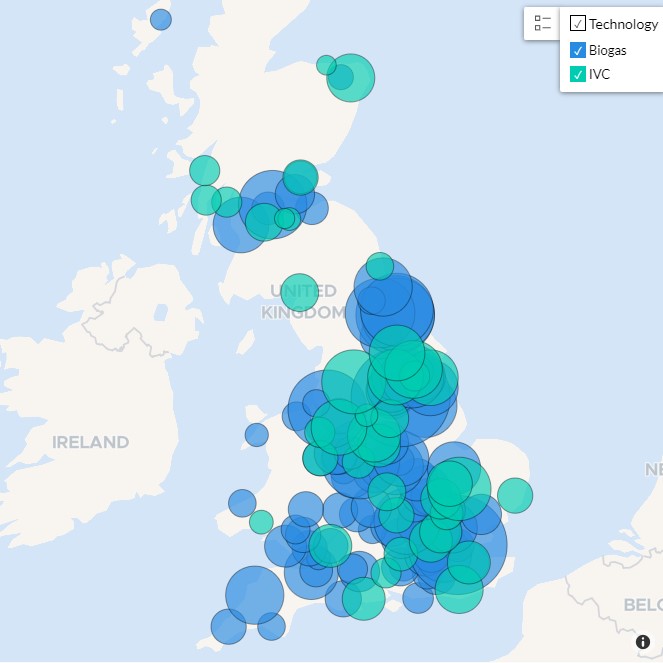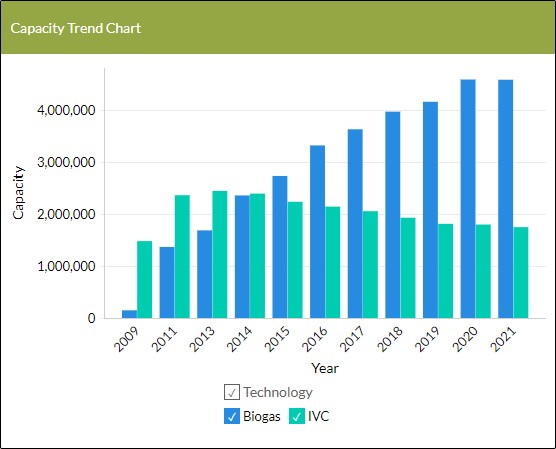Biowaste Processing Update – January 2022
The Food Waste Recovery Dashboard from Footprint Services has been updated based on Defra approved premises data to reflect developments up to the end of 2021.
In the past decade, the UK has witnessed a transformation in food waste processing, with the dramatic rise in Anaerobic Digestion (“AD”) countered by a corresponding decline in the use of In-Vessel Composting (“IVC”).

Chart 1 – AD and IVC Across The UK
Chart 2 (below) suggests that the rise in AD capacity has slowed in the past year. Given the difficulties caused by the pandemic, this is perhaps not entirely surprising, and this lull may be a pause in development rather than a halt or a reversal.

Chart 2 – Capacity Trend Across UK
As might be expected, the overall pattern is not necessarily reflected in every region. For instance, in the South East, the AD capacity has continued to rise, irrespective of any hindrance caused by the pandemic, with the 45,000 tonne per annum biogas facility at Blaise Farm Quarry now open for business:

Chart 3 – Capacity Trend (South East)
The Food Waste Recovery Dashboard allows users to explore each region to see where the facilities are sited, with bubble size representing the headline capacity of the site in question. Chart 4 (below) shows AD and IVC capacity located in the South East:

Chart 4 – AD and IVC in the South East
Post-Covid, if commitments are met on separate food waste collections (every household is due to receive separate, weekly food waste collections from 2023), then this will release a significant extra volume of food waste requiring recovery technology, so it is likely that the overall capacity is set to head upwards once again.
